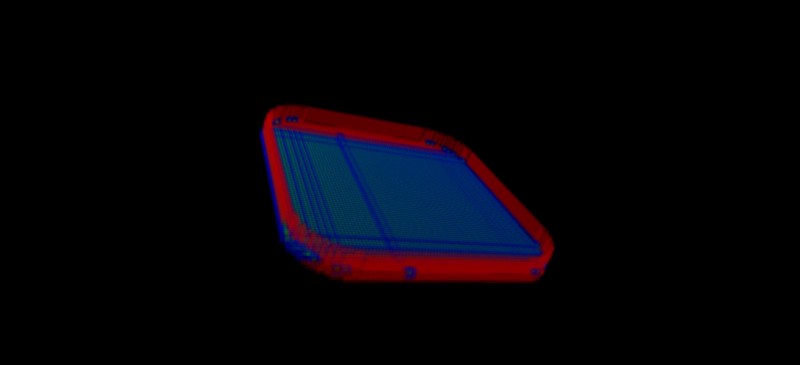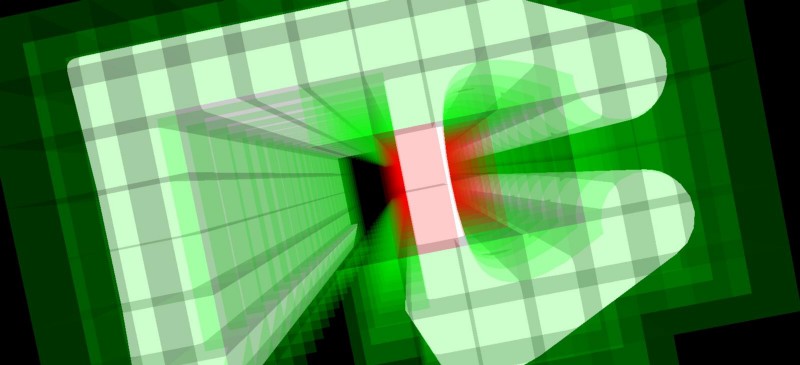In this post, I would like to give an overview of the 3D printing technologies which exist today. Each of these technologies deserves a blog post on its own, but I want to start with an overview.
While writing this blog post, I realized that I needed to introduce some concepts first before I go on explaining the specifics of each of the technologies:
- Build platform — platform on which the parts are build. Just imagine a plate which can be lowered and raised.
- Build chamber — chamber in where the 3D printing takes place. It consists of the build platform, heads / laser or projectors, the material distribution and depositing mechanisms.
- Layers — 3D printers build parts in layers which are stacked on top of each other. In most cases, you can recognize the layering when examining a 3D printed part.
- Support structures — structures to help the printing process. The structures support overhangs while printing making sure the part does not collapse on itself during printing.
- Support material — special material for making support structures. The reasons to use a different material is that it is easier to remove and recognize during cleaning of the part.
SLA — Stereolithography Aparatus
This is the oldest commercial 3D printing technology invented by Chuck Hull in 1984 and commercialized by founding 3D systems in 1986. The printing works by having laser solidifying a liquid resin in a VAT on a build platform. The next layer is added by lowering the build platform inside the VAT. After printing, the part is cleaned in a chemical bath, and cured in an UV oven. This technology needs support structures.
A variation of this technology uses DLP (Digital Light Processors) instead of a laser to cure the resin. This makes the printing process go faster.
SLA systems are manufactured by 3D Systems, Envisiontec (DLP) and ZCorp(DLP)
For more information see this excellent Wikpedia article.
SLS — Selective Laser Sintering
This technology was invented by Dr. Carl Deckard around the same time as SLA. The process is essentially fusing small particles in powder form together using a laser. Just below the powder this is a build platform which lowers to make room for the next layer. A wiper redistributes the powder over the platform, and the next layer is fused by the laser. This technology does need support material or structures. The powder functions as a support.
Using SLS several types of plastic, metal and ceramic/sand powders can be used.
SLS systems are sold by EOS and 3D Systems.
For more information see this Wikipedia article,
FDM — Fused Deposition modeling
Scott Crump invented FDM in the late 80s and commercialized it through his company Stratasys in 1990. FDM printing works by extruding a material through a nozzle and move the nozzle over a build platform to “write” the part. The next layer is added by lowering the build platform. Support structures or materials are necessary for this technology, but not all manufacturers offer that option and thus limiting the usefulness of their FDM systems.
Common materials are plastics, but other compound materials are used as well. FDM technology is employed by many low cost hobbyist printers.
FDM systems are sold by Stratasys, Makerbot, UP!, Fab@Home and others.
For more information see Wikipedia
3DP — Three Dimensional Printing
This technology came out of MIT and was invented in 1993. It is commercialized by Z Corporation, but others use the same technology, as well. 3DP uses a powder as well in the printing process. The powder is “glued” together by binder on a build platform. The binder is deposited by a moving head. The next layer is added by lowering the build platform. A wiper redistributes the powder. The powder acts as support, so this technology does not need any support structures or material. The parts are extremely fragile after printing and need to be carefully cleaned and cured.
There is a wide range of options for powder and ranges from plaster, ceramics, metals to glass. Unique to the commercial application of Z Corporation is the ability to color the parts during printing resulting in parts delivered in full color.
3DP systems are manufactured by Z Corporation, ExOne and Voxeljet.
For more information please see the 3DP page at MIT.
Polyjet matrix printing
This technology is specific for Objet Geometries. The process builds parts by extruding or jets extremely small droplets of material onto a build platform. The head can drop multiple droplets at the same time — hence the name matrix. After depositing, the material is cured using UV light. The next layer is deposited on top of the previous layer. This technology uses support material during building.
The material used in this process is a polymer. Unique to this process is that it can use two distinct materials to build a part including mixing these two materials in different variations.
Polyjet matrix systems are manufactured by Objet.
For more information see Wikipedia.
EBM — Electronic Beam Melting
This printing process is developed by Arcam which was founded in 1997. This process uses a powder which is fused together on a build platform by an electronic beam. By lowering the build platform and redistributing the powder using a wiper, the next layer can be build. The process is similar to SLS but uses an electronic beam instead of a laser.
The powders are always metals with different types of alloys. The build chamber is a vacuum and heats up until 700–1000C.
EBM systems are manufactured by Arcam
For more information see the EBM Wikipedia page
LOM — Laminated Object Manufacturing
This technology is developed by Helisys. it uses thin sheets of material which is cut by either a laser or a knife according to the outline of the part. Next the sheet is glued on top of the previous cut sheet of material. After printing the excess material is “broken” off and you are left with the printed parts.
LOM printers mostly use paper, but there are also other materials — mostly various plastics.
LOM systems are today only manufactured by Mcor technologies.
For more information see this — somewhat sparse — Wikipedia article.
These are the most 3D printing technologies manufactured today. There are more technologies and variations available in both research and production, but they focus on real niche areas.


